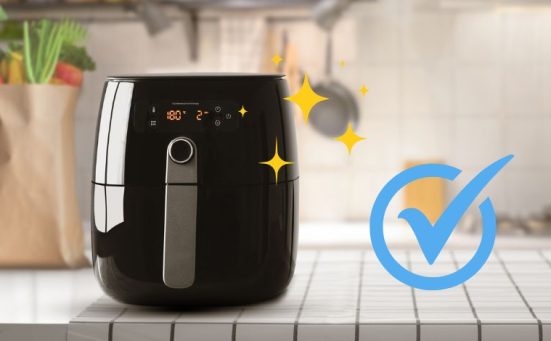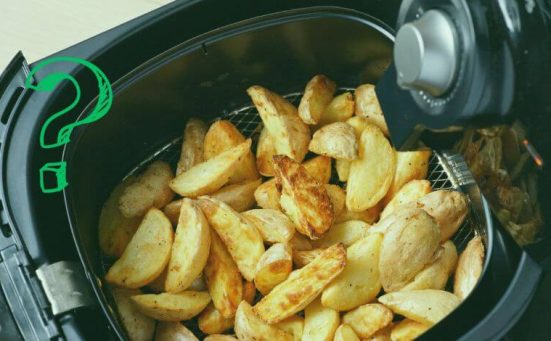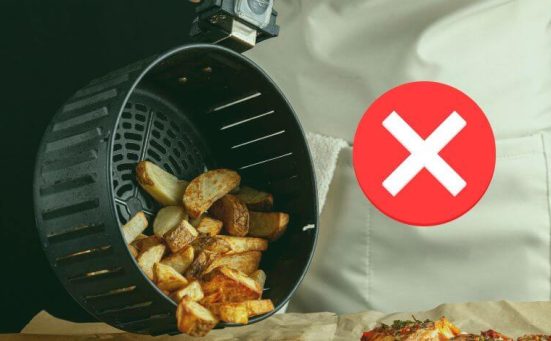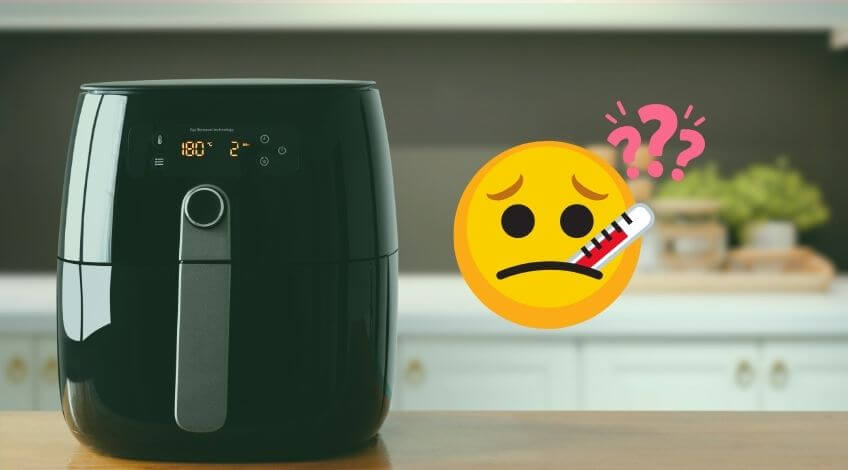
Is Your Air Fryer Making You Sick (What No One Tells You)
You’ve joined the air fryer revolution, haven’t you? Crispy chips with barely any oil, perfectly golden chicken that’s ready in minutes and vegetables that actually taste good enough for the kids to eat them. It’s like having a tiny miracle machine on your kitchen counter.
But what if we told you that your beloved air fryer could be making you ill? Not to make you panic, but there are some genuine health concerns that manufacturers don’t exactly shout about on the packaging. From dodgy coatings to hidden germs, your trusty kitchen companion might be harbouring secrets that could affect your family’s wellbeing.
Here’s what you really need to know to keep your household safe while still enjoying all those crispy, delicious meals.
The Hidden Problems With Your Air Fryer
Air fryers have become kitchen heroes, but like any appliance, they come with potential risks that most people never think about.
Your Air Fryer Coating Can Release Nasty Fumes
That smooth, non stick surface in your air fryer basket? It can actually release harmful gases when it gets too hot.
Most air fryer baskets are coated with a chemical called PTFE, the same stuff used in non stick pans. When this coating gets heated above 260°C, it starts breaking down and releases fumes that can make you feel unwell. The problem is that many air fryers easily reach these high temperatures during normal cooking.
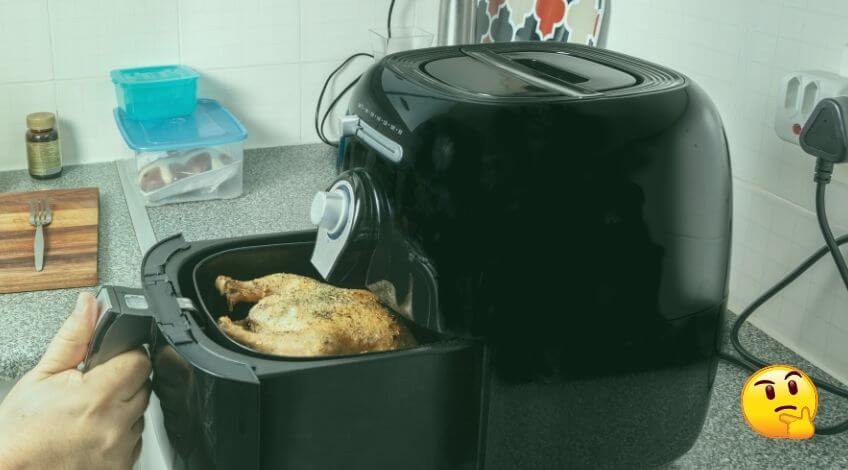
These fumes can cause headaches, chills and make it hard to breathe. If you have pet birds, this is especially dangerous because these gases can actually kill them.
To stay safe, don’t crank your air fryer up to maximum heat unless you really need to, make sure your kitchen windows are open when cooking and think about getting an air fryer with a ceramic coating instead.
Germs Love To Hide In Your Air Fryer
That quick rinse you give your air fryer after cooking? It’s not getting rid of all the tiny food bits that collect in places you can’t see.
Air fryers have lots of little nooks and crannies where food particles get stuck: around the heating element, in the air vents, and under parts you can’t easily reach. These spots become perfect breeding grounds for nasty bacteria like Salmonella, which can make you seriously ill.
The powerful fan that makes your air fryer work so well also blows any germs around the cooking chamber, potentially contaminating every meal you make.
After each use, take apart whatever bits you can (check your manual first) and clean every surface you can reach. Pay extra attention to the area around the heating element and use a soft brush to remove trapped food.
Crispy Foods Might Contain Cancer Causing Chemicals
Air fryers can actually create more of a potentially harmful chemical called acrylamide than traditional cooking methods.
Acrylamide forms naturally when starchy foods like potatoes get very hot. Because air fryers often cook at higher temperatures for longer than other methods, they can produce more of this chemical. Health experts consider acrylamide a possible cancer risk.
Foods like chips, bread, and processed snacks are most at risk. That golden brown colour we all love actually shows that acrylamide is forming. Cooking food a bit lighter reduces the risk.
Common Mistakes That Could Make You Ill
Even experienced cooks make these simple errors that can turn your air fryer into a health risk.
Stuffing Too Much Food In Creates Cold Spots
We’ve all done it: packed the basket full to get everything cooked at once. But cramming too much food in doesn’t just affect taste, it can leave some areas undercooked where harmful bacteria survive.
When food is squashed together, the hot air can’t move around properly, leaving cold patches. That chicken that looks perfectly cooked on the outside might still be raw inside, which could give you food poisoning.
The fix is simple: cook smaller amounts at a time and use a food thermometer to check everything is properly cooked. Chicken needs to reach 75°C inside, while beef and pork should hit 63°C for medium cooking.
Using The Wrong Oil Can Damage Your Health
Not all oils are suitable for air fryer cooking and using the wrong ones can create harmful chemicals and damage your machine.
When oils get too hot, they break down and release nasty substances. Coconut oil, butter and extra virgin olive oil all start smoking at temperatures lower than most air fryers reach during cooking.
Plus, those spray cans of cooking oil contain chemicals that can damage your air fryer’s coating and release potentially harmful fumes when heated.
Stick to oils that can handle high heat like avocado oil or sunflower oil and use a refillable spray bottle instead of aerosol cans.
Cooking Different Foods Back To Back Spreads Germs
Many people cook raw meat and then immediately cook vegetables without cleaning in between. This spreads dangerous bacteria from one food to another.
Even if you cook the second batch of food properly, germs from the raw meat can contaminate it. This is especially risky when you cook raw chicken and then reheat something that won’t be cooked again, like leftover pizza.

Always wash the basket, drawer and any utensils between cooking different foods, especially when going from raw meat to anything else.
Cleaning Problems You Probably Don’t Know About
Your normal cleaning routine is missing some crucial spots where dangerous germs can build up.
The Heating Element Area Gets Really Grotty
The heating element at the top of your air fryer collects grease and food particles that you probably can’t see or reach easily.
Over time, this buildup goes rancid and becomes a breeding ground for bacteria that contaminates every meal you cook. When this old grease gets hot, it can smoke and release toxic fumes that affect both food safety and taste.
Some of this contamination happens in places you can’t safely clean without breaking your air fryer or voiding the warranty. This means even careful cleaning leaves some nasty stuff behind.
If you use your air fryer heavily, consider getting it professionally serviced or replacing it when the buildup becomes too much for home cleaning.
The Sliding Drawer Tracks Are Germ Magnets
Those tracks where your air fryer drawer slides in and out collect grease, crumbs, and moisture that most people never think to clean.
These areas stay warm after cooking, creating perfect conditions for bacteria to multiply. Your standard cleaning focuses on the obvious surfaces while these hidden spots stay contaminated, spreading germs to clean parts every time you use the drawer.
Take the drawer out completely and clean the tracks with warm, soapy water. Use an old toothbrush to get into all the grooves and make sure everything is completely dry before putting it back together.
How To Use Your Air Fryer More Safely
You don’t need to ditch your air fryer completely. Here’s how to use it more safely while still enjoying convenient cooking.
Use A Proper Food Thermometer Every Time
Professional kitchens always check food temperatures in multiple spots, and you should do the same at home.
Check the thickest parts of meat, make sure vegetables are heated through, and confirm that frozen foods are completely cooked. Air fryer cooking can make food look done on the outside while still being unsafe inside.
Get a good instant read thermometer with a thin probe that gives quick, accurate readings. For larger items like whole chickens, probe thermometers that stay in the food work well.
Clean Like A Professional Kitchen
Professional kitchens follow strict cleaning rules, and you can adapt these for home use.
Use proper sanitising solutions, follow a wash, rinse, sanitise routine and allow enough drying time to prevent bacteria growth. Focus on areas that touch food directly and pay extra attention to parts you can’t clean easily.
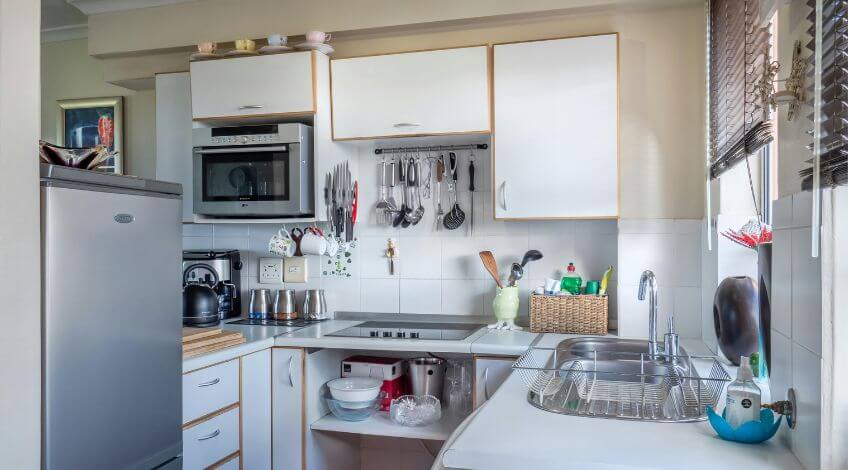
Set up a weekly deep cleaning schedule that goes beyond daily maintenance, taking apart whatever you can safely remove according to your manual.
Control Your Kitchen Environment Better
Professional food operations control things like air circulation and storage conditions, which you can do at home too.
Keep your kitchen well ventilated to remove cooking fumes and moisture that help bacteria grow. Store your air fryer in a clean, dry place between uses, and leave enough space around it for proper air flow during cooking.
Watch your kitchen’s temperature and humidity levels, as too much heat and moisture create conditions where bacteria multiply faster and equipment breaks down quicker.
Warning Signs Your Air Fryer Is Becoming Dangerous
Some red flags suggest your air fryer has become a health risk that needs immediate attention.
Strange Chemical Smells Mean Stop Cooking Immediately
If your air fryer starts producing unusual chemical odours during cooking, stop using it right away.
Sweet, sharp or burning chemical smells often mean the coating is breaking down or internal parts are failing. These smells indicate toxic fumes that pose immediate health risks and suggest the appliance is no longer safe for cooking.
Never ignore these warning signs or try to cook through them.
Your Family Keeps Getting Sick After Air Fryer Meals
If family members regularly get stomach upsets after eating air fryer food, despite following food safety rules, your appliance might harbour bacteria in places you can’t clean.
When standard cleaning and proper cooking don’t solve recurring illness problems, the air fryer itself may be contaminated beyond home cleaning methods.
Professional inspection or replacing the unit becomes necessary when normal maintenance can’t resolve ongoing contamination issues.
Visible Damage Means Replacement Time
Obvious damage to non stick surfaces, discoloured internal parts, or mechanical problems mean your air fryer has reached the end of its safe life.
Flaking coatings, rusty metal surfaces, or faulty heating elements create food safety risks that cleaning or minor repairs can’t fix.
Replace damaged units rather than trying to repair them, which might create additional safety problems.
Your Air Fryer Can Still Be A Kitchen Hero
Understanding these risks doesn’t mean throwing your air fryer in the bin. Knowledge helps you use it safely while protecting your family’s health.
The trick is balancing convenience with proper safety habits. By cleaning more thoroughly, checking food temperatures carefully, and watching for warning signs early, you can keep enjoying the benefits of air fryer cooking while minimising health risks.
Remember that all cooking methods have some risks. Air fryers, when used properly with the right precautions, can still be valuable tools for busy families who want both convenience and safety.
Your family’s health is worth the extra effort that safe air fryer cooking requires.
If this information has helped you cook more safely, share it with friends who might benefit from these insights!
SEE ALSO: Why Your Laundry Room Always Feels Cluttered (And 5 Easy Fixes)
Also, follow us on Pinterest ...

